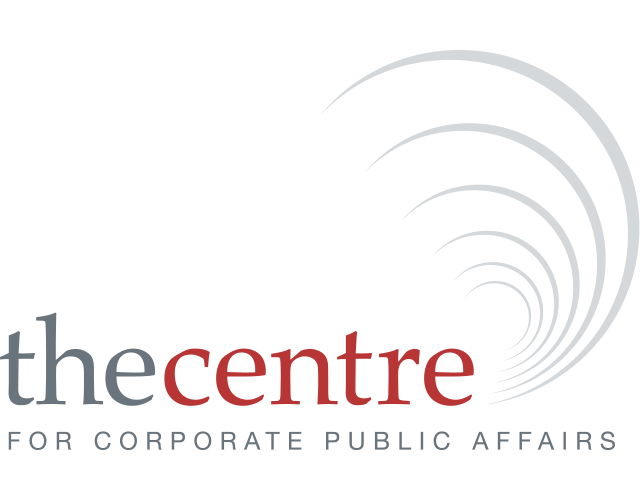
The Centre’s top five predictions for 2019
With the New Year marched in, and with most of us hardly believing that it’s been 12 months since we didn’t become better people, it’s time for the Centre to make its annual predictions for the practice of corporate public affairs.
Looking back on our predictions for 2018 – led by a prediction that more companies and campaigns would make use of psychographic profiling drawn from Big Data (read Facebook and Cambridge Analytica) – we are pretty certain we can avoid being tarred and feathered for outlandish portents.
Our 2019 Top 5 predictions are based on our work with corporations and governments in Australia and across Asia Pacific, our discussions with Boards, CEOs and their senior management teams, as well as with heads of corporate public affairs functions, and insights gleaned from our consulting work globally.
1. More companies and industries will become involved in advocacy around social and political issues
In 2019 we expect more corporations to make decisions or get involved in social issues and advocacy because it benefits their business – ‘doing the right thing’ in the interests of their stakeholders, responding to employee sentiment and agitation, aligned with stakeholder requests and expectations, generating reputational capital and shareholder value.
In 2018 Airbnb, Microsoft, Google and Apple actively opposed the Trump Administration’s immigration ban based on religion and country of origin; Citi withdrew its banking services from gun manufacturers internationally; Michael Page offered job seeker assistance to refugees and asylum seekers in Australia and advocated for more job seeking support for this cohort, and Google withdrew from a defence contract following its employees advocating the arrangement did not align with the company’s values.
We forecast that before the end of this year, many more Boards and senior leadership teams will develop criteria to make decisions about social or political issues with which they will get involved as a way of streamlining how decisions are made, and to be more transparent about the criteria used to make such decisions.
Based on the Centre’s observations of action by many corporations, the criteria would most likely include:
• the business impact of getting involved;
• the reputation risk of involvement;
• likely stakeholder reaction if the business did take a stand;
• the reputational and social licence risk of not being involved; and
• the actions of competitor or peer companies.
Expect more social advocacy and activism by corporate Australia in 2019.
2. The Investor Relations discipline will begin migrating back to the corporate public affairs management function
Our 2016 State of Public Affairs in Australia (the 2019 research survey will be out in the field in the first half of this calendar year) reported that only 20 per cent of listed companies managed the Investor Relations discipline in the corporate public affairs function.
This has shifted upwards during the past few years, driven by:
• the primacy for some corporations for all reputation-related messaging to be managed in one management function;
• some CEO’s and management teams perceiving that Investor Relations is a communication and stakeholder engagement discipline, best managed in the corporate public affairs communication and stakeholder engagement collegiate;
• social license to operate and issues associated with it - a focus of considerable corporate public affairs monitoring and stewardship - increasingly being of interest to/concern of, equities analysts and the financial and business news media with which investor relations practitioners engage.
3. Heads of Function will seek more diversity of thought in their teams
Many corporate public affairs leaders are recruiting actively to ensure their teams are reflective of the communities in which they operate. ‘Male, pale, and stale’ isn’t cutting it anymore in teams that seek to engage and influence stakeholders from across the community, including employees.
A large number of leaders in the function perceive also that ‘diversity of thought’ is also desirable in corporate public affairs teams to avoid ‘group think’ among practitioners. They are keen to encourage diversity of thought to nurture a culture in which ideas, approaches to problem solving and modus operandi are seen through the eyes and thinking of different professions and disciplines, and to encourage team and public affairs sacred cows to be challenged and interrogated.
We forecast that in 2019 more heads of function will second executives from the finance, audit, legal, marketing, risk, and strategy management functions, and from operating divisions, into their corporate public affairs function to strengthen diversity of thought.
We predict also that mathematicians, futurists, workplace anthropologists, as well as actuaries will be added to public affairs on a seconded or full-time basis.
4. Arms Race for advocates
For many companies, identifying potential advocates to go to bat for a corporation or entity is one objective of good stakeholder engagement.
“Crowds and connections get attention and cut through,” observed a corporate public affairs leader last year, whose company uses a specialist advocate recruitment agency to help it identify, offer training to, and support advocates to get involved in issues and discourse about the corporation, its issues, and its industry.
NGO activist advocacy groups have been recruiting, preparing, and supporting third party activists for some years as part of their advocacy campaigns.
During the last few years, more corporations have been seeking to do the same above and beyond engaging with stakeholders who influence directly the enabling environment.
“We’re in an Arms Race with NGO advocacy groups and other companies to identify and recruit the support and active voices of people in the community who are aligned with our industry or company, and who will get involved in public discourse,” one long-time Head of Function told us last year.
These efforts include identifying and supporting advocates outside an organisation’s employee base (though identifying, preparing, and supporting employee advocates is frequently part of a broader effort).
In the past, most corporations have been allergic to recruiting, preparing, and supporting members of the community as advocates because corporate public affairs strategists perceived such advocacy would be perceived cynically by legislators, regulators, the news media, the community, and by employees.
However, many corporate public affairs leaders deem that identifying and supporting third-party advocates had become an “absolutely necessary” element of their capability to influence stakeholders, manage issues, and defend and extend corporate reputation.
Specialist agencies in the US have been recruiting advocates for corporations and industry groups for some years. More of these services will, we forecast, be available across Asia Pacific in 2019.
5. Campaigns and coalitions are back
2019 will be the year when most corporate public affairs teams in large organisations will be ‘campaign ready’ – able to muster the resources and expertise to develop and manage public advocacy campaigns above and beyond business as usual, to achieve or make progress on public policy objectives, or as part of issues management and/or reputation stewardship.
Corporate affairs teams have for decades developed and organised media relations, internal, and advocacy ‘bursts’ to focus stakeholder attention and prompt action.
This year, the capability of teams to integrate public affairs resources – academic and market research, coalitions of like-minded entities, media relations, social media content, presence, dialogue, government relations, third party advocates, the input and support of specialist agencies, and even media advertising – in a longer and more sustained campaign effort, will be well evolved.
The desirability of corporations and industry groups developing, managing and sustaining campaigns is reactive as well as a necessity for some entities.
Low community trust in corporations, a crowded and noisy town square of public discourse, splintered news media and information sources and choices, and the prevalence of news platforms of a highly suspicious nature, means it is more difficult than even five years ago for businesses to get their messages disseminated and listened to.
Advocacy campaigns offer the public affairs function a method and a cavalcade of vehicles to ‘cut through’ and amplify messages and engagement with stakeholders.
We forecast that more corporate advocacy campaigns will be developed and managed in 2019, and that the specialist campaign capability and smarts residing in the function will become a permanent fixture.
The Way We Were – Centre Top 5 Predictions in years past
The year that was: Centre Top Predictions for 2018
1. More psychographic-profiling using Big Data
2. Boards want more frequent reputation research
3. More demand for generalist practitioners
4. Many public affairs teams will get bigger
5. Corporate brand management will be back in the function
The year that was: Centre Top Predictions for 2017
1. The evidence-base Arms Race
2. The beginning of the end of the corporate Intranet
3. The digital production-savvy corporate public affairs practitioner
4. Infographic mania
5. More women leading the management function
The year that was: Centre Top Predictions for 2016
1. Stakeholders at the heart of corporate public affairs strategy
2. Social Media Command Centres
3. Public affairs night shifts will be introduced in some organisations to monitor issues, and provide rapid socio-political response
4. Renaissance of the corporate narrative
5. Public Affairs helping their organisation understand the Asian Century
The year that was: Centre Top Predictions for 2015
1. Convergence of internal and external communications
2. More cooperation between public affairs and marketing departments
3. Application of heuristics to corporate stakeholder communications
4. Stakeholder research becoming an essential input to public affairs strategy and planning
5. Advent of a 'common market' for corporate public affairs skills across Australia and Asia
